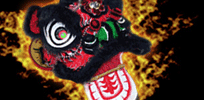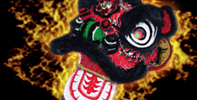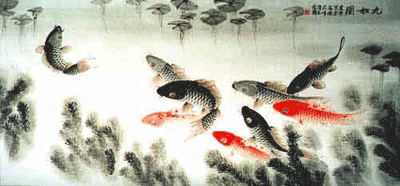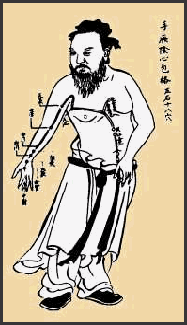

|
HOME
|
THE ACADEMY
|

|
Welcome! |
 Tuesday, September 2
Tuesday, September 2 |
| WHAT'S HOT |
|
One Week Free Classes & Free Uniform |
| SITE OPTIONS |
 Site Intro Site Intro Guest Book Guest Book Contact Us Contact Us Mailing List Mailing List |
| QUICK LINKS |
 Seminars Seminars Products Products School Location School Location Testimonials Testimonials Class Schedule Class Schedule Coupons Coupons Articles Articles Forum Forum Photo Gallery Photo Gallery News News Event Calendar Event Calendar FAQ FAQ |
| SCHOOL SEARCH |

|
| Home -> Knowledge -> Chinese Medicine |
|
|
Chinese Medicine Traditional Chinese MedicineTraditional Chinese Medicine is the oldest and most comprehensive system of medical diagnosis and complete human health care which combines the use of acupuncture, acupressure, herbal medicine, massage (Tui-na) bone-setting (Dit-da), and qi gong exercises as well as nutrition and healthy living to bring the body into balance naturally. Like Chinese Martial Arts, Traditional Chinese Medicine is a big part of Chinese culture and tradition. Gung Fu and Chinese Medicine go hand in hand and being integral part of traditional gung fu, the skill, knowledge and theory of TCM has been passed down from master to disciple for thousands of years. For centuries, gung fu training and traditional Chinese medicine, specifically dit da has been practiced and thought together. What is Dit Da Jow Medicine?Dit Da is the traditional Chinese art of healing injuries. Dit Da deals with both the prevention and treatment of many different types of internal and external injuries such as bruises, sprained and dislocated joints, broken bones, cuts etc. Dit Da Ke (Cantonese) or Tieh Ta Ke (Mandarin) is commonly translated into English as Fall and Hit medicine or Iron Hit Medicine. Dit Da has been an integral part of traditional gung fu for centuries. It has developed, flourished and evolved over hundreds of years and passed down from master to disciple for generations as an integral part of gung fu training and tradition. Practice of Dit Da and gung fu training go hand in hand, they compliment and complete one and other. Past masters were always known for their dit da skills as well as their gung fu. They would often earn their living from treating patients and selling herbal medicine. Dit da skills and herbal formulas of a gung fu family were always highly guarded and kept very secret. Only the selected students, the successors of the gung fu family who proved their loyalty and dedication through many years of training would receive the direct and complete transmission of dit da skills along with their gung fu training. This tradition is still carried on today. Although may be not as secretive as in the past, many good masters still preserve and carry on this tradition and carefully select their students. However, sadly most of the modern day gung fu practitioners and masters do not posses any dit da knowledge or skill. Generally martial art injuries can be divided into internal and external. In martial arts the external injury can be defined as any kind of damage to the body from outside including blows, strikes, knocks and falls. Most external injuries involve damage to the skin and flesh, the sinews and bone, and the qi and blood. Some of the most common injuries caused by knocks and falls include swelling/bruises, cuts and grazes, sprains, bone fractures, dislocations, and damage to the bowels and viscera. In the Dictionary of Chinese Medicine, internal injury is defined as "damage to the bowels and viscera (internal organs) and other deep structures of the head, chest, and abdomen through knocks and falls, lifting heavy weights, or spraining". In martial arts most common internal injuries are internal bleeding, blood clots, damage to the internal organs, etc. Dit Da makes extensive use of herbal remedies/medicine and massage as well as number of other methods mentioned earlier to treat both types of injuries. The use of herbal remedies to treat injuries has been a part of Chinese culture of thousands of years. When talking about what is used in herbal medicine, most people automatically think about natural plant parts such as roots, leaves, bark, fungus twigs and so on. Although this is correct, traditional Chinese herbal medicine also includes mineral and animal substances/products as well plants. Now days the use of animal parts such as tiger bones, deer horns etc are strictly forbidden in the west and practitioners now use alternatives to animal parts. The herbal medicines used in dit da normally come in the form of decoctions, liniments, wine, powders, plasters, balms and pills. In martial arts most widely used and known herbal medicine is Dit Da Jow. (from Hung Kuen Net)  What is acupuncture?Simply put, Acupuncture is a branch of traditional Chinese Medicine and part of traditional Chinese arts (internal & external) as well as an effective method of therapy, which involves the insertion of very fine needles, into various points (acupuncture points) on the body's surface, in order to influence physiological, emotional and psychological functions in the mind and body to prevent or treat illness. Acupuncture has been practiced in china for thousands of years. The first record of Acupuncture is found in the Huang Di Nei Jing or the Yellow Emperor's Classic of Internal Medicine. Being a branch of traditional Chinese medicine, acupuncture follows the principles and theory of TCM to prevent or treat illness and maintain natural balance and harmony within the body. Acupuncture aims to restore health by improving the flow of vital energy called qi. Qi flows through the body along 14 main meridians or channels each of which linked to specific organs or organ systems. When these channels become blocked, deficient, excessive, or just unbalanced, it will cause illness. In order to remove blockages, or strengthen and improve the flow of qi in the meridians an acupuncturist will insert very thin, flexible needles into certain specific points along the meridians. The needles used in acupuncture are flexible and very thin (about three times the thickness of a human hair). Although there are many types of needles, today there are only six types of needles commonly used by the modern acupuncturist. The needles vary in length, width of shaft, and shape of head. The length of a needle may vary from l cm to l5 cm and the diameter from 0.27 mm to O.46 mm. The lengths of most commonly used needles are 1 inch and 1.5 inch. The needles used today are disposable and packaged sterile. These needles are only used once and then discarded in accordance with medical biohazard regulations and guidelines. The needles are made from stainless steel with a very flexible shaft that makes it very hard to bend or break. Although most of the needles used today are made of stainless steel, the copper, gold and silver needles are still been used. Gold is thought by some to notify and silver to disperse qi. Acupuncture needles are different from the hypodermic needles, which are used for injections etc. As mentioned acupuncture needles have solid and very fine shafts, which deliver no fluid and when used correctly no bleeding or bruising will occur. The needles used for injections have very hollow shafts, which cause the tissue to be torn by the needle on insertion. In other words, the acupuncture needles have a doweled end, not a cutting end like most hypodermic needles, and therefore are far less likely to cause tissue damage or bruising when inserted. In a normal acupuncture treatment, the acupuncturists will first examine the patient using number of different methods such as checking the pulses on each wrist, examining the tongue etc. The number of treatment needed depends on the result of the diagnosis and the condition of the patient. In general the treatment will take place once or twice week until the expected therapeutic results are achieved. Most people are frightened or afraid of receiving acupuncture treatments due to variety of reasons. When performed by a properly trained and licensed practitioner Acupuncture is quite safe and effective. There are no side effects of acupuncture if the treatment is carries by a professional. Despite what many people may think the insertion of acupuncture needle is not a painful experience. While the needles can feel uncomfortable at times, they very rarely hurt. During a typical treatment session, the needles are inserted by placing them in a tube-like holder first to keep them from bending upon insertion on to the body. Then the acupuncturist will tap the top of the holder to insert the thin needle perpendicularly or obliquely at the specific points to the desired depth, usually to a depth of about a quarter of an inch into the skin. The holder is then removed, leaving the actual needle in place. The size of the needles used depends on the area of the body where they are to be inserted. For example, longer, thicker needles are used in areas where there is more "cushioning" such as the buttocks, while small, thin needles are used where the flesh is thinner and closer to the bone. In either case, insertion of the needles is quick and virtually painless. The number of needles inserted depends on the treatment and can vary from one to 15. Once the needle is inserted and the point is correctly located with the required depth reached, the patient should feel what is called a 'needling sensation' or de qi. De qi is the sensation, which the acupuncturist will try to achieve at the site of needle insertion and indicates successful application. This sensation usually experienced by the patient may be a feeling of numbness, heaviness, swelling, pressure, or tingling. Once the needles are inserted at the correct points and de qi is achieved, the acupuncturist may twist or move the needles manually using a rotating or pumping action or send a weak electrical current through them to increase the energy flow. The needles may be left in place for 15 to 40 minutes, before removal. Sometimes other therapies, such as moxabustion, cupping, acupressure/massage and exercises are incorporated with the acupuncture treatment. Acupuncture is a safe and an effective way of disease treatment, which has become very popular and spread all over the world. Today there are more than 3,000,000 acupuncture practitioners worldwide. The majority of these 3,000,000 practitioners practice in the East; however, during the last half of the 20th century the number of persons studying acupuncture in the West has been steadily growing, with many educational establishments offering variety of courses. The Northern Shaolin Kung Fu and Tai Chi Academy recently held an Acupuncture Seminar with Dr. Jane Liu of Beijing Acupuncture.
Check our FAQ for more information |
|
|
Visited 14127 Times Since 03/28/07 | Last Modified 6/18/2025 |
|
|
|
 |
Northern Shaolin Kung Fu and Tai Chi Academy 619 South Trooper Rd, Audubon, PA 19403 Copyright © 2025 610.631.9200 |
